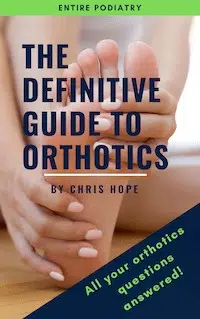Shin splints (otherwise known as Medial Tibial Stress Syndrome or MTSS) is a common cause of leg pain in athletes. Pain from shin splints is usually felt about halfway down along the shin and can also extend up toward the knee. The inflammation which causes shin splints can be the result of a number of factors, but biomechanically the main cause is over-pronation or excessive inward rolling of the feet. For this reason, people who have flat feet are particularly susceptible to developing shin splints. Other factors that can contribute include muscle imbalances and running on hard or inclined surfaces.
To prevent shin splints from becoming a problem for you, here are our top 5 tips…
1. Ensure you wear appropriate footwear
Shoes that offer exceptional all-around support will help to prevent over-pronation and reduce strain on the muscles in the lower leg. In addition to suitable shoes, wearing orthotics can significantly reduce the risk of shin splints by optimising the biomechanics of your feet. Your podiatrist will be able to conduct a comprehensive biomechanical assessment to advise on the best type of orthotics and shoes to suit your feet and activity levels.
2. Perform muscle strengthening exercises
Targeted muscle strengthening exercises have been found to help prevent shin splints, by minimising some of the muscle imbalances in the lower leg. In particular, exercises to strengthen the muscles which act to invert and dorsiflex the ankle are beneficial.
3. Ensure any increases in activity levels are gradual
Before commencing an exercise program or increasing your activity levels, make sure this is planned in a gradual way (considering activity intensity, frequency and duration). Beginner runners are more susceptible to shin splints because their legs are not used to being stressed, and the tendons and muscles are less able to absorb the impact as they become fatigued. This can subsequently contribute to the development of shin splints or MTSS.
4. Avoid running on hard or inclined surfaces
The impact on the lower legs from running is greater when running on an inclined, uneven or hard surface. To minimise the risk of shin splints, as part of your training program consider how frequently you run on these surfaces.
5. Stretch your calf muscles
Tightness in the calf muscles can contribute to muscle imbalances in the lower leg and excessive pronation of the foot, which is associated with shin splints or MTSS. To reduce the risk of shin splints developing, perform calf stretches regularly, particularly before exercising.
If you have any issues with shin pain or would like further advice from one of our podiatrists, call to make an appointment with Entire Podiatry on 1800-4-ENTIRE. Alternatively, you can contact one of our 8 clinics directly, located across Brisbane and the Gold Coast.





